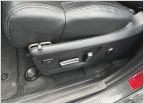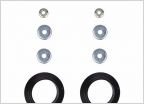-
Welcome to Tundras.com!
You are currently viewing as a guest! To get full-access, you need to register for a FREE account.
As a registered member, you’ll be able to:- Participate in all Tundra discussion topics
- Transfer over your build thread from a different forum to this one
- Communicate privately with other Tundra owners from around the world
- Post your own photos in our Members Gallery
- Access all special features of the site
pink / strawberry milkshake - can it happen with 3rd gen?
Discussion in '2.5 Gen Tundras (2014-2021)' started by TTund16, Apr 30, 2017.


 LED hitch mount light
LED hitch mount light $25 DIY wireless charger- clean and easy
$25 DIY wireless charger- clean and easy Transfer Case oil
Transfer Case oil Why does toyota use canister oil filter?
Why does toyota use canister oil filter? Looks suspicious?
Looks suspicious? Black Friday / Cyber Monday Finds...
Black Friday / Cyber Monday Finds...












































































